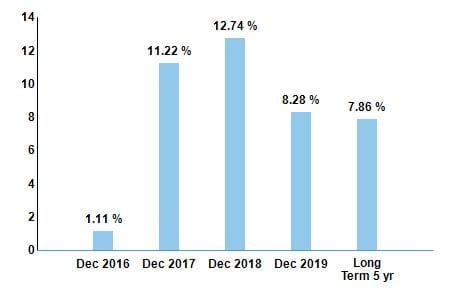Omni is the New Normal – These Multichannel Marketing Statistics for 2017 Prove It

If you are not using a multichannel marketing strategy for your online store, you are missing out. According a recent Invesp report, 73% of marketers already have a multichannel strategy in place, and 95% agree that it’s an important part of reaching new customers and generating new sales. Between 2015 and 2017, three out of four marketing channels are being used by omni marketers, representing a dramatic increase in awareness and reach.
Recent cross-channel selling statistics underscore the importance of an omni engagement plan, finding that 66% of shoppers use more than one sales channel to make online purchases. All told, the omni-channel shopper is the most valuable of the bunch, and has an assessed lifetime value that’s 30% higher than any other type of online consumer.
Tragically, most retailers are not doing enough to engage multichannel shoppers, much less list their products across multiple sales channels to attract more sales. As Econsultancy reports, just 5% of marketers currently have the necessary tools for multichannel marketing, and only 39% of e-tailers even have the required analytics and reporting in place—like ReadyCloud CRM—to help their marketing teams set new sales benchmarks.
Omni is the new norm in ecommerce, and the following multichannel marketing statistics will drive home this point—so you can take your sales to a new level by expanding your marketing reach.
The Birth of Omni: The Cross Channel Seller
In the “Econsultancy Digital Trends 2015” report, the think tank surveyed thousands of online retailers, asking them a variety of questions. The most received question was this: “What is the single most exciting digital opportunity?” The answer, unsurprisingly, was Omni Channel.

Was the omni channel shopper birthed in 2015? Unlikely. Roll the dates back about a decade, when Amazon first started ascending the ranks to online universe status, and you’d have a combination of online stores that were selling on a solitary channel plus eBay, who also began marketing their products on Amazon, effectively creating a three-tiered sales channel approach with the goal of attracting sales in as many places as possible. Omni shoppers are assuredly a product of the 2000s and beyond, and will be the future placard that marketers reach to.
How Do the Numbers Stack Up? So who’s buying what from which sales channels and just how important is reach in today’s omni ecommerce world?
Social Commerce
Let’s start with social commerce. While social has long been viewed as an indirect marketing channel, it’s evolved into a powerful ecommerce sales channel that shouldn’t be overlooked. The most recent social commerce statistics show that creative e-tailers have added this omni channel to their marketing plan, helping to drive more than $30 billion per year in sales.

Amazon is King
Amazon, naturally, tops the list for omni-channel engagement, outdoing every other online retailer by a long shot with sales, including one of the other largest companies in the world, Apple. The most recent Amazon statistics reveal that 30% of online shoppers in the U.S. have an Amazon Prime account, with about half of them spending at least $800 per year. Telling of its might and muster, more than 2 billion products were sold on Amazon in 2014 alone. Imagine what those numbers are like today?

eBay’s in the Mix
One can’t overlook eBay as part of the omni-channel evolution, either. According to the most recent eBay statistics, the gross merchant volume is at least $21.9 billion, with more than 162 million active users spending around $2.3 billion or more per quarter, as of 2015. With more than 20 years of business under its belt, eBay may not sell as much as Amazon does, but remains a critical sales channel for omni marketers at the present; something that is not going to change any time soon.
Mobile Commerce
Mobile plays a strong role in multichannel marketing with the most recent mobile shopping statistics finding that 55% of traffic going to the leading online retailers comes from mobile. An estimated 1.2 billion people are using their smartphones for an average of one or two hours per day, with 60% of shoppers beginning their product searches from a mobile device, and nearly half of those searches starting at Amazon. All told, mobile sales represent a healthy 30% chunk of ecommerce, explains Internet Retailer, with overall sales growing by an astonishing 250% from 2014 to 2017.

Video is at the Forefront of Omni
While you can’t really buy something from inside of a video – consumers can click on ads or learn more about the product or service from a video. When used for omni marketing, videos have been shown to be a viable marketing strategy that can improve conversions by 73%, decrease showrooming by 46%, improve product descriptions by 71%, increase brand trust by 58%, and reduce returns by 60%. No wonder video accounts for 14% of all internet rankings, driving home another reason why multichannel marketers love it: Because it works!

Staying Ahead of the Curve
As you can see, the new digital marketing world is a multichannel parallel universe. It requires a succinct approach and a unique strategy to derive success. No longer to do marketers have to be ill-equipped to pursue such a strategy. That’s where ReadyCloud CRM comes in.
Share On:








